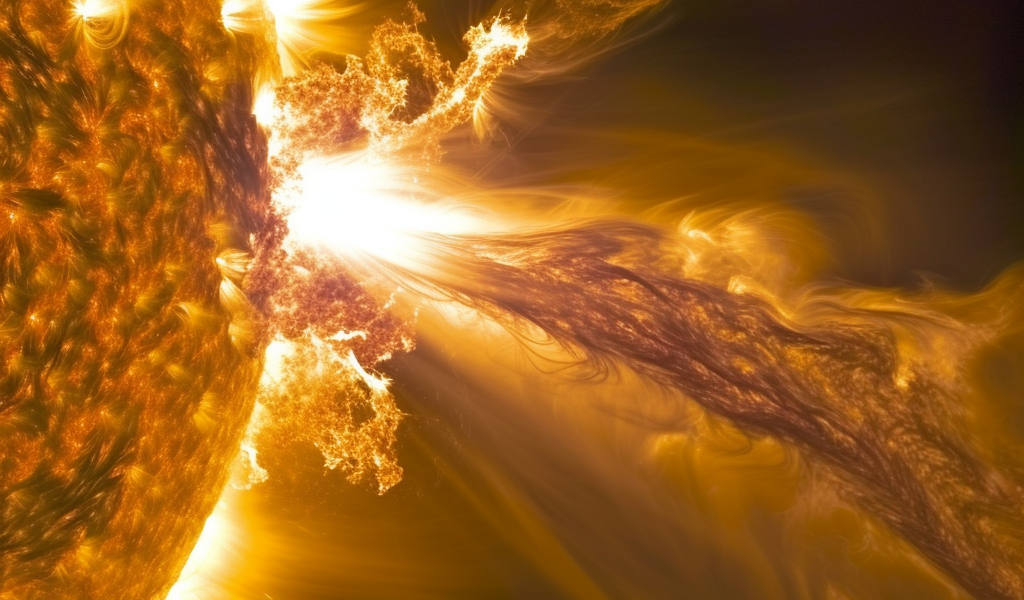Nasa recently captured a powerful solar flare erupting from the Sun, causing immediate and diverse repercussions. The eruption, originating from sunspot AR3559, emitted a powerful M6.7-class solar flare in the early hours of Monday. This extreme ultraviolet flash was captured by Nasa’s Solar Dynamics Observatory, showcasing the sun’s volatile behavior.
The impact of this solar flare was widespread, leading to a shortwave radio blackout over Australia. This blackout affected ham radio operators and mariners, causing signals below 30 MHz to vanish for potentially up to an hour following the flare’s peak, disrupting communication capabilities.
Despite its position near the sun’s western limb and not directly facing Earth, sunspot AR3559 is magnetically connected to the planet. This connection is explained by the concept known as ‘the Parker Spiral,’ describing how the sun’s magnetic field extends into space in a spiral pattern due to solar rotation, serving as a pathway for charged particles.
Energized protons from the flare are now traveling along this spiral path toward Earth, leading scientists to anticipate the onset of an S1-class radiation storm or stronger within the coming hours. These storms pose risks to astronauts and satellites in orbit, potentially causing increased radiation exposure and damage to sensitive electronic equipment.
This solar flare is in line with the ongoing trend of increasing solar activity as the predicted solar maximum in 2025, part of the 11-year solar cycle, approaches. Experts foresee similar events becoming more frequent in the coming years as solar activity continues to rise.
Stay updated with the latest scientific news and discoveries by following the TOI Science Desk. Our team of journalists is dedicated to bringing you captivating news, features, and articles from the ever-evolving world of science. Whether it’s genetic engineering, space exploration, or artificial intelligence, the TOI Science Desk ensures you stay connected to the pulse of the scientific world.





